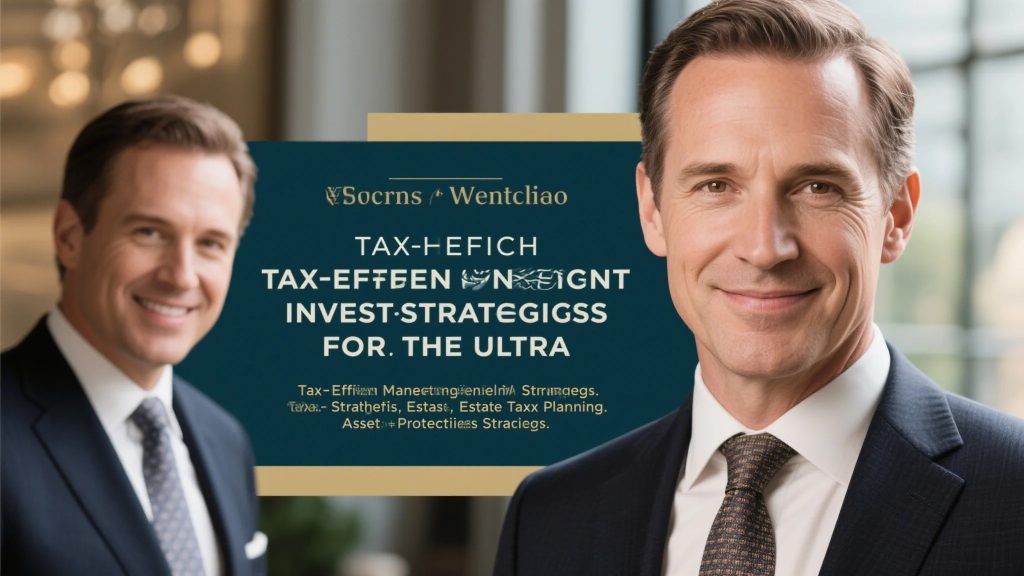
Tax-Efficient Investment Strategies for the Ultra-Wealthy
Advanced Tax Optimization Frameworks for Substantial Wealth
Sophisticated tax-efficient investment strategies for ultra-high-net-worth individuals require multi-layered approaches that address both current income tax liabilities and long-term wealth transfer considerations. These comprehensive plans typically begin with asset location optimization, strategically placing investments across taxable, tax-deferred, and tax-exempt accounts to maximize after-tax returns. Municipal bond portfolios often form the foundation of taxable accounts, providing federally tax-exempt income that can be particularly valuable for investors in higher tax brackets.
Complementing these core wealth management strategies, many families incorporate private placement life insurance (PPLI) wrappers around alternative investment portfolios. These sophisticated structures offer both tax deferral and potential tax-free growth benefits when properly structured. The most effective implementations coordinate PPLI policies with existing estate plans to create seamless wealth transfer mechanisms that bypass probate while providing creditor protection benefits in many jurisdictions.
Strategic Utilization of Tax-Advantaged Jurisdictions
Well-designed tax shelter strategies leverage domestic and international opportunities without crossing into aggressive tax avoidance territory. Qualified opportunity zone investments allow for deferral and potential elimination of capital gains taxes while directing capital to underserved communities. These programs require careful due diligence to identify projects with strong fundamentals beyond just the tax benefits, as the economic merits ultimately determine investment success.
When integrated with comprehensive wealth management strategies, these approaches can significantly enhance after-tax returns over multi-generational time horizons. Puerto Rico’s Act 60 program offers another compelling option for qualifying individuals willing to establish bona fide residency, providing potential 0% tax rates on capital gains and qualifying investment income. These jurisdictional strategies require thorough analysis of lifestyle implications and long-term commitment to maintain their benefits.

Estate Tax Mitigation Through Advanced Planning Techniques
Proactive estate tax planning moves beyond basic will preparation to incorporate sophisticated wealth transfer mechanisms. Grantor retained annuity trusts (GRATs) have emerged as particularly powerful tools, allowing families to transfer asset appreciation to beneficiaries with minimal gift tax consequences. These structures work exceptionally well during periods of market volatility, as the actuarial calculations used to determine gift values often underestimate eventual asset growth in recovering markets.
The most effective tax-efficient investment strategies coordinate these estate planning vehicles with investment selection to maximize their benefits. Family limited partnerships (FLPs) frequently hold assets destined for GRATs, providing additional valuation discounts that enhance wealth transfer efficiency. Regular reappraisals ensure these structures continue to deliver optimal results as asset values and applicable federal rates fluctuate over time.
Comprehensive Asset Protection Integration
Robust asset protection strategies form a critical component of holistic wealth preservation plans for ultra-high-net-worth families. Domestic asset protection trusts (DAPTs) established in favorable jurisdictions like South Dakota or Nevada provide strong safeguards against future creditors while maintaining varying degrees of beneficiary access. These structures prove most effective when funded well before any potential claims arise, as courts scrutinize recent transfers more closely under fraudulent conveyance laws.
When combined with sophisticated estate tax planning, these protective measures create comprehensive shields around family wealth. Offshore trusts in jurisdictions like the Cook Islands or Nevis offer additional layers of protection for families with international connections or heightened liability exposure. The most successful implementations carefully balance asset protection objectives with tax compliance requirements, ensuring full adherence to international reporting obligations.
Philanthropic Planning as a Tax Optimization Tool
Strategic charitable giving enhances overall tax-efficient investment strategies while fulfilling philanthropic goals. Donor-advised funds provide immediate tax deductions for contributions while allowing families to maintain advisory privileges over subsequent grantmaking. Private foundations offer greater control and legacy-building opportunities, though with more complex administrative requirements. The choice between these vehicles depends on each family’s specific charitable objectives and desired level of involvement.
For families with highly appreciated assets, charitable remainder trusts (CRTs) can be particularly effective components of comprehensive wealth management strategies. These structures allow donors to avoid capital gains taxes on contributed assets while receiving lifetime income streams and current charitable deductions. The net income with makeup charitable remainder trust (NIMCRUT) variation provides additional flexibility by allowing income deferral during low-earning years, making it especially attractive for retirement planning purposes.
Next-Generation Education and Wealth Stewardship
Effective implementation of asset protection strategies and tax optimization plans requires preparing heirs to responsibly manage family wealth. Family offices increasingly incorporate financial education programs that teach younger generations about investment principles, tax implications, and the responsibilities that accompany substantial wealth. These initiatives often include hands-on experience with family investment committees or philanthropic boards to provide practical learning opportunities.
When integrated with broader wealth management strategies, these educational components help ensure the long-term success of complex tax and estate plans. Dynasty trusts frequently include incentive provisions that encourage beneficiary behaviors aligned with family values, such as educational attainment or entrepreneurial pursuits. Regular family meetings and transparent communication about wealth preservation goals foster shared understanding across generations, reducing the likelihood of future disputes or mismanagement.


